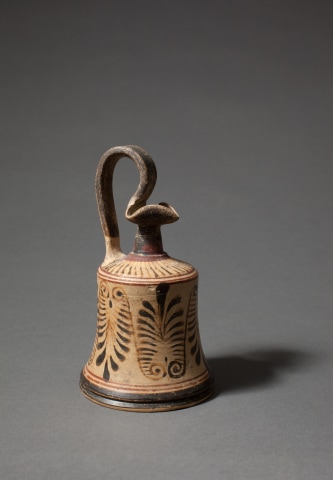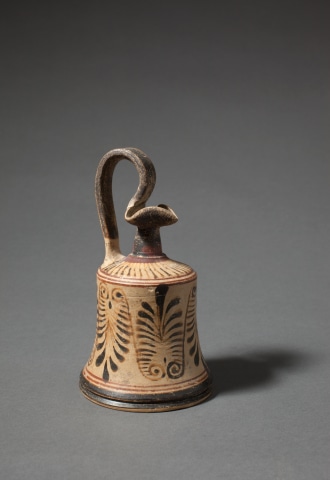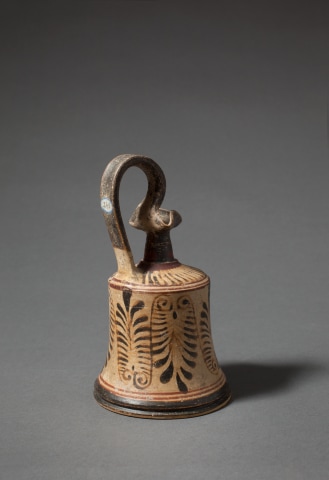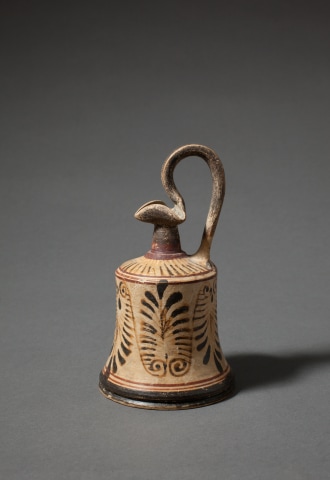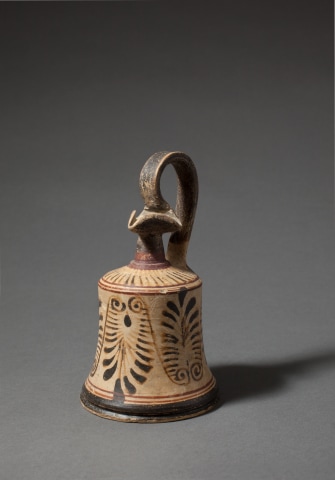Greek white-ground oinochoe, Corinth, early 4th century BC
Terracotta
Height: 12.7cm
8548
%3Cdiv%20class%3D%22title_and_year%22%3E%3Cem%3EGreek%20white-ground%20oinochoe%3C/em%3E%2C%20%3Cspan%20class%3D%22title_and_year_year%22%3ECorinth%2C%20early%204th%20century%20BC%3C/span%3E%3C/div%3E%3Cdiv%20class%3D%22medium%22%3ETerracotta%3C/div%3E%3Cdiv%20class%3D%22dimensions%22%3EHeight%3A%2012.7cm%3C/div%3E%3Cdiv%20class%3D%22price%22%3E%E2%82%AC%2012%2C000%3C/div%3E
With bell-shaped body, narrow neck, trefoil lip and high arching handle attached to the shoulder’s edge. The body mainly covered in white slip with decoration in black-glaze and added red;...
With bell-shaped body, narrow neck, trefoil lip and high arching handle attached to the shoulder’s edge. The body mainly covered in white slip with decoration in black-glaze and added red; alternating linked palmettes on the body and rays on the shoulder. The neck and lip are black-glazed. On the back of the handle is a small oval label with number '240' and to the base in pencil 'Corinthe 81.11'. Intact, with some very minor retouching of the glaze.
A very uncommon form. Payne places this shape under the category ‘Broad-bottomed oinochoe’, and describes an example in the Louvre which has tongues on its shoulder and palmettes on the body. He states that the shape is found in Attica at this period.
Provenance
Louis-Gabriel Bellon (1819-1899), St. Nicholas-les-Arras, France; collection no.240
Bellon was a keen supporter of the arts throughout his life. He numbered among his friends artists such as Dutilleux, Carot and Daguerre. In the 1850s he carried out regular excavations in Saint-Nicolas-les-Arras of the Gallo-Roman and Merovingian necropoleis.
Literature
Compare Humfry Payne, Necrocorinthia: A Study of Corinthian Art in the Archaic Period (reprinted College Park, Maryland, 1971), catalogue of late Corinthian vases II, p.336, fig.191
